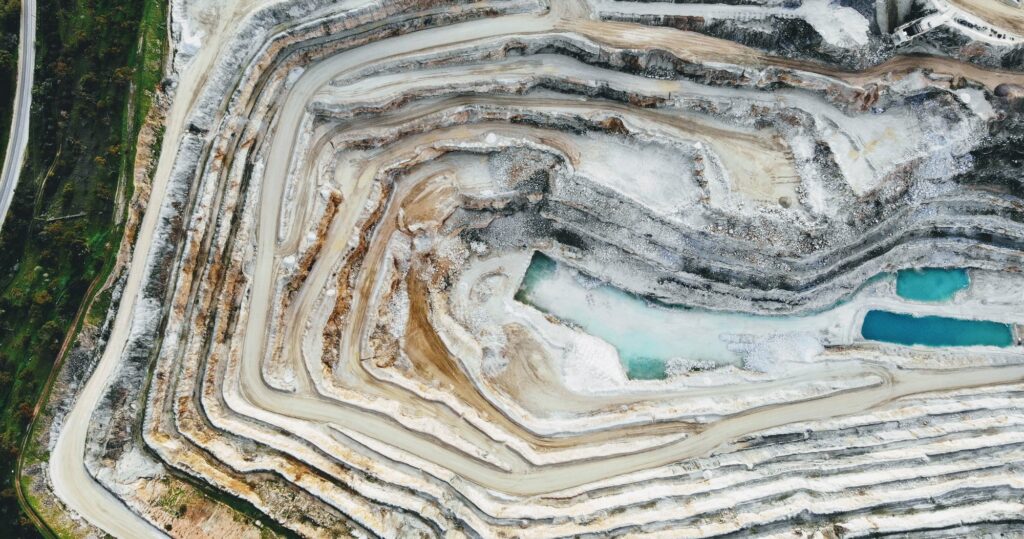It’s no secret that there is a global push to move to sustainable energy. Many homes, businesses, automobiles, and consumer products will one day be powered by renewable energy sources such as wind and solar, with the goal of a largely decarbonized grid on the horizon.
But generating clean power isn’t enough. To make it a stable and scalable alternative to fossil fuels, energy must be reliably stored to charge all these components and keep energy in reserve for peaks and spikes in demand.
The predominant power source for most battery technology comes from lithium-ion batteries. These batteries are found in smart phones, battery electric vehicles (BEVs), and in shipping containers as components of the electrical transmission or distribution grid. While lithium-ion batteries are critical to the transition to renewable energy, they are not without their challenges. Lithium is difficult to extract and can be ecologically detrimental if it is not done with care.
The Current Mining Approach
Commonly, lithium is extracted using traditional underground or open-pit hard-rock mining techniques. In countries like Australia, lithium is mined as ore in large open-pit mines, which is then heated to very high temperatures as part of the extraction process. This method is very resource and emissions-intensive, leaving large tracts of disturbed land, where byproducts from the mining process are left behind to be washed into rivers and streams or swept into the air as particulate matter, settling in reservoirs or in fields cultivated with crops.
Another very common extraction method uses saltwater brines found within underground reservoirs in places such as Chile. Here, brines are pumped up from the ground into enormous pools where sunlight evaporates the water, leaving lithium and other waste minerals behind. These are then extracted chemically to isolate the lithium. Since this method is used in regions where rainfall is sparse, the evaporation of significant volumes of water can have notable detrimental impacts. Freshwater aquifer volumes can be reduced, affecting drinking water supplies, and agricultural production.
Newer and Cleaner Extraction Technologies
Several new technologies promise to reduce the risks associated with extracting lithium, while exacting a reduced ecological cost on regions where the mineral is found. These technologies may help to reduce the environmental and social impacts while increasing production volumes to meet an ever-growing demand.
1. Recycling Old Lithium-ion Batteries and Packs
When a battery pack no longer has the capacity to be effective in a vehicle, there are sometimes ways in which the hardware can be repurposed for other applications, like stationary grid energy storage. Automotive manufacturers have been working with third-parties to enable this sort of battery pack re-use scenario. In recent decades, recycling has also been used successfully to reclaim lithium from end-of-life battery packs, and use it as a feedstock for the manufacture of new battery cells.
While the technology is currently deemed to be more expensive than mining virgin lithium due to the relatively low lithium concentration in batteries, there are commercial applications that are now claiming evidence of operational profitability. Given the growing demand for lithium, processes that enable the repurposing and recycling of lithium-ion batteries and their constituent materials will only continue to become more economically feasible.
2. Extraction via Geothermal Reservoirs
Geothermal springs are found across the globe, which invarably contain lithium, potassium, salt, and other minerals. A process called Direct Lithium Extraction (DLE) “enables a more sustainable lithium supply, including using geothermal energy as the renewable power source for production” (NREL, 2021). This technique employs adsorption through the application of porous materials, removing the lithium and returning the salt, remaining minerals, and water back to the underground reservoir.
A promising start-up company in the U.S. is using ion-exchange resins to capture lithium via their electron charge. The resin beads are then rinsed with hydrochloric acid to produce lithium chloride. This method is less water-intensive, produces lower volumes of waste brine, requires less energy, and is capable of high production capacity. An additional benefit is the possibility for geothermal energy facilities to act in a hybrid capacity to derive lithium from “extracted fluids already used for electricity production” (U.S. Office of Energy Efficiency & Renewable Energy, 2021)—boosting the cost effectiveness of industrial assets already in operation.
3. Metal-Organic Filtration
Another technology under development is a metal-organic framework used to extract lithium directly from seawater using a desalinization method. In this method, Lithium is captured within a sponge-like structure that features the “the largest internal surface area of any known material” (Irving, 2018). This technology provides an intriguing co-benefit: it can provide clean drinking water using less energy than the more common reverse osmosis systems. While still in the research and development stage, this technology may represent perhaps the cleanest alternative yet.
Sustainability as Innovation
As the world moves toward sustainable energy, there is a responsibility to extract lithium effectively, ethically and safely to avoid significant collateral damage to the health and well-being of people and planet alike. But with innovation, imagination, and prudent investment, extractive industries could adopt sustainable processes that solve the problem while offering other economic and social benefits.
At the Henry Bernick Entrepreneurship Centre (HBEC) at Georgian College, we help businesses incorporate sustainable thinking as part of their core business practices. We believe that a sustainable economy will draw increasingly on low-carbon energy technologies like batteries—and those batteries should be built using lithium from non-destructive sources. Some companies may even be directly involved with the development of new battery chemistries to reduce our reliance on lithium, expanding the availability of clean energy to power the businesses of tomorrow.
Contact us today to see how we can help you incorporate sustainability into your business plans.




